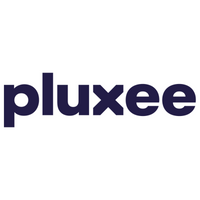Top 5 things you need to know about wearable rewards

But could it soon be the future for employee benefits too? Employee benefits providers are now starting to offer wearable incentives as part of their package, and the number of organisations taking up these initiatives is growing fast.
But before you dive in to using wearable tech for your employees, here are five things you should know:
1) What is wearable tech?
Wearables are becoming increasingly popular and represent possibly the biggest innovation in technology since the smartphone.
Wearable tech for employees covers a broad range of items, from fitness trackers and smart glasses to smart watches and headphones, all designed to measure employee wellbeing, productivity and performance.
Here’s an essential round-up of the type of wearable tech organisations could offer their employees:
- Fitness trackers – typically worn on the wrist or clipped to a belt, fitness trackers can track your steps, distance covered and sleep patterns. Fitbit, Garmin Vivo, Nike+ FuelBand and Jawbone are all fitness trackers.
- Smart watches – watches that connect to your smartphone and help you manage your digital life. The latest models are now starting to incorporate health data.
- Sports watches – generally used by those that love cycling, swimming and running, although also used by other sports. They include GPS, cadence counters and sometimes heart-rate data.
- Smart jewellery – mainly aimed at women. Smart jewellery can provide the same functions as smart watches.
- Smart glasses – a wearable computer that adds information to what the wearer sees. They are also known as Digital Eye Glass or Personal Imaging System.
- Smart clothing – yes, really! Smart clothing is like regular clothing but it incorporates electronics, and experts are predicting that smart clothing will incorporate the data seen in fitness trackers in the next few years.
2) The market for fitness trackers is skyrocketing!
Despite the range of wearable tech, when it comes to integrating it into corporate wellbeing programmes, the primary focus is on fitness trackers that can help employees improve their health and fitness. As a result, the market for fitness trackers is booming:
- According to research firm Canalys, they expect that the number of fitness trackers sold by 2017 will be more than 45 million.
- Hi-tech analysts, Juniper Research, predict a massive rise in global retail revenue from smart wearable devices, from around $5 billion (£3.17 billion) per annum today to $53.2 billion (£33.72 billion) by 2019.
- In its report, Wearable Wireless Devices in Enterprise Wellness Programs, ABI Research estimates that more than 13 million wearable activity-tracking devices will be integrated into employee wellness programmes by 2018. A massive increase on the 2013 wellness plans, where according to principal analyst Jonathan Collins, less than 200,000 wearable devices were integrated.
- Nearly two-thirds (65%) of respondents in a PricewaterhouseCoopers (PWC) survey want their employer to take an active role in their health and wellbeing, using technology to help with this.
3) Data from wearable employee benefits can boost corporate wellbeing
Many organisations are already using wearable employee benefits as a means of encouraging their employees to get fit and develop and maintain healthy habits. For example, holding an annual corporate wellness challenge where teams are pitted against each other to walk the most number of steps.
However, it’s not just employees who can benefit from wearable tech. Some organisations give their employees a Fitbit, Garmin Vivo, Nike+ FuelBand or Jawbone, and in return, the employee formally agrees to the company using the data to improve corporate wellbeing. Organisations can achieve this in a number of ways, for example:
- Data can be anonymised and used by the HR team to gain insights that can improve the corporate wellbeing strategy.
- Data can be used to identify trends and assess the ROI of the corporate wellbeing strategy.
- Data is linked to the employees’ individual record in their employee benefits portal, which enables them to access extra employee benefits or reduce the cost of specific benefits, such as cheaper medical insurance.
Several studies highlight the link between corporate wellbeing programmes and employee engagement, productivity and retention. So giving your employees wearable fitness tech and motivating them to use it is an excellent way to engage and interact with your employees and get the maximum impact from your employee benefits and wellbeing programmes. It also enables you to demonstrate your commitment to your employees and encourage organisation-wide cultural change.
4) Combining it with gamification will supercharge your results
People loved to be recognised, and gamification is a fun and innovative way to recognise and reward your employees for improving their health and wellbeing.
Gamification is about using game design elements in a non-game context so that you make the hard stuff in life fun. By using these proven motivational techniques, you can encourage interaction, thereby helping drive sales, increase employee engagement and productivity, and improve profits and customer satisfaction.
Many fitness tracker apps already use digital badges to reward and engage users. A digital badge is an online representation of an achievement and users can share their achievements via the app or social sharing.
Digital badges are the perfect reward to use in the workplace as they engage your staff and give you a way to say thank you. Here are five tips on how to use digital badges to reward your staff:
- Create different levels of badges that enable employees to demonstrate on-going progress.
- Create badges that highlight both individual and team performance.
- Create badges for recognition beyond the workplace, such as running their first parkrun or stopping smoking.
- Don’t make the levels between the badges too great, remember when it comes to health and wellbeing, small changes over the long term can have a significant impact.
- Enable employees to print out, display or share their digital badge through social media.
5) Employers will need to overcome concerns about data
Wearable tech for employees isn’t a silver bullet, and many employees will have concerns about the data employers have access to.
More than a third of respondents in a PricewaterhouseCoopers (PWC) survey did not trust their employer not to use the data from wearable technology against them in some way.
Additionally, there are concerns their health data might be passed on to external organisations, such as insurance companies, which might affect their relationship with that organisation.
Data privacy and protection laws provide legal protection for employees, but it up to employers to allay their employees’ concerns if the programme is to be a success. Mistrust will only result in employee disengagement, rather than employee engagement, so it is crucial for employers to communicate clearly what data employers will receive and how employers will use the data.
There is not a one-size-fits-all answer to these concerns. Employers need to strike the right balance between personalising the data to give employees actionable insights into their health and wellbeing, whilst ensuring that trust is maintained and the experience is purely positive. A great programme will fulfil their employees needs and anonymise the information to enable the employer to use the data to inform their corporate wellbeing strategy and determine the ROI on the programme.
Iain Thomson is director of incentives and rewards at P&MM Motivation, part of the Sodexo family.

This article was provided by P&MM Motivation, part of the Sodexo family.
Supplied by REBA Associate Member, Pluxee UK
Pluxee UK, is a leading employee benefits and engagement partner that opens up a world of opportunities to help people enjoy more of what really matters in their lives.







